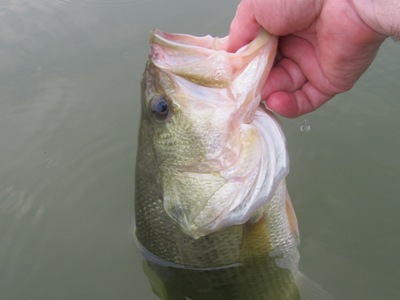
The largemouth bass is by far the most popular freshwater fish in North America. Originally native to the Mississippi Basin, it has been widely introduced throughout North America and other parts of the world.
The largemouth bass is identified by its stocky body, green coloration and large mouth that extends beyond the eye when closed.
It is sometimes confused with its close relative, the smallmouth bass. Another relative, the green bass, is smaller with a body shape similar to sunfish.
In the Mid Atlantic states, freshwater anglers fish for largemouth bass year round. Their popularity is due in part to their adaptability and unique life style.
Largemouth bass are found throughout the Mid Atlantic in lakes, reservoirs, ponds, rivers, and creeks.
They tolerate salinity, low oxygen, water temperature fluctuations, pollution, and other factors much more successfully than many other freshwater species.
In the Mid Atlantic region, largemouth bass fisheries are often found in surprising locations, such as the Susquehanna Flats, tidal Gunpowder River, and Back Bay (Virginia Beach).
Largemouth bass fisheries are sometimes threatened by invasive species of fish. In Virginia and North Carolina, some largemouth bass fisheries have been negatively impacted by invasive Alabama bass. In parts of the Chesapeake Bay watershed, largemouth bass have been displaced by northern snakeheads.
Although anglers sometimes dedicate hundreds of hours of time and thousands of dollars in equipment in pursuit of the species, largemouth bass can be easy to catch and are commonly caught even the youngest of anglers.
They can be caught from shore, by wading, or by fishing from boats. Conventional spinning and baitcasting tackle dominates the fishery, although some anglers fish for them successfully with fly-fishing gear.
Some bass anglers consider the use of live baits or the taking of largemouth bass for food to be taboo, although both practices occur in practically every state.